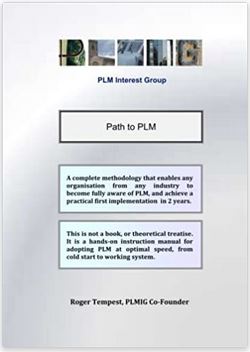|
PLM Interest Group |
|||||||||||||||||||||||
|
|
|
|
|||||||||||||||||||||
|
|
|
|||||||||||||||||||||
|
|
|
|
|||||||||||||||||||||
|
Path to PLM
A Clear Route to Adoption
The Path to PLM is a comprehensive framework of tools and information that leads from the first decision to try to understand PLM to a fully-working implementation. What Is It, and What Does It Do?
It provides you with a central structure to build the optimal PLM environment within your organisation, and a core set of standard principles against which you can compare the external information sources and proprietary advice.
The Path to PLM can also be used by companies that have already started out with PLM, but feel that progress has not been as good as expected. The methodology includes a "brownfield" process that will steer the implementation onto a best-practice track within a similar timescale. How Do I Use It?
The driving force for the Path to PLM is that you can confidently declare, at the outset, that there will be a working and effective PLM platform in place in 2 years' time. This means that you can set a date on the calendar that everyone can plan towards. Everything then falls into place. There is a Standardised Project Framework that divides the 2 year timeframe into 3-month segments of activity; and a comprehensive set of tables to check that each activity has been successfully completed. Concepts are explained, and further reading is suggested. The PLM adopter can therefore work confidently towards the 'Go-Live' target, knowing that everything is being done in the most effective way. How Do I Get One?
The Path to PLM Handbook is provided with Q&A support to PLMIG Members, so you will receive a copy if you join with any class of Membership. Alternatively, you may buy hard copies from Amazon. For more information about the Path to PLM, or the Handbook itself, contact pathtoplm@plmig.com. © Copyright 2025 PLM Interest Group |
||||||||||||||||||||||
| <<< Return Home | |||||||||||||||||||||||
|
|
|
|
|||||||||||||||||||||





